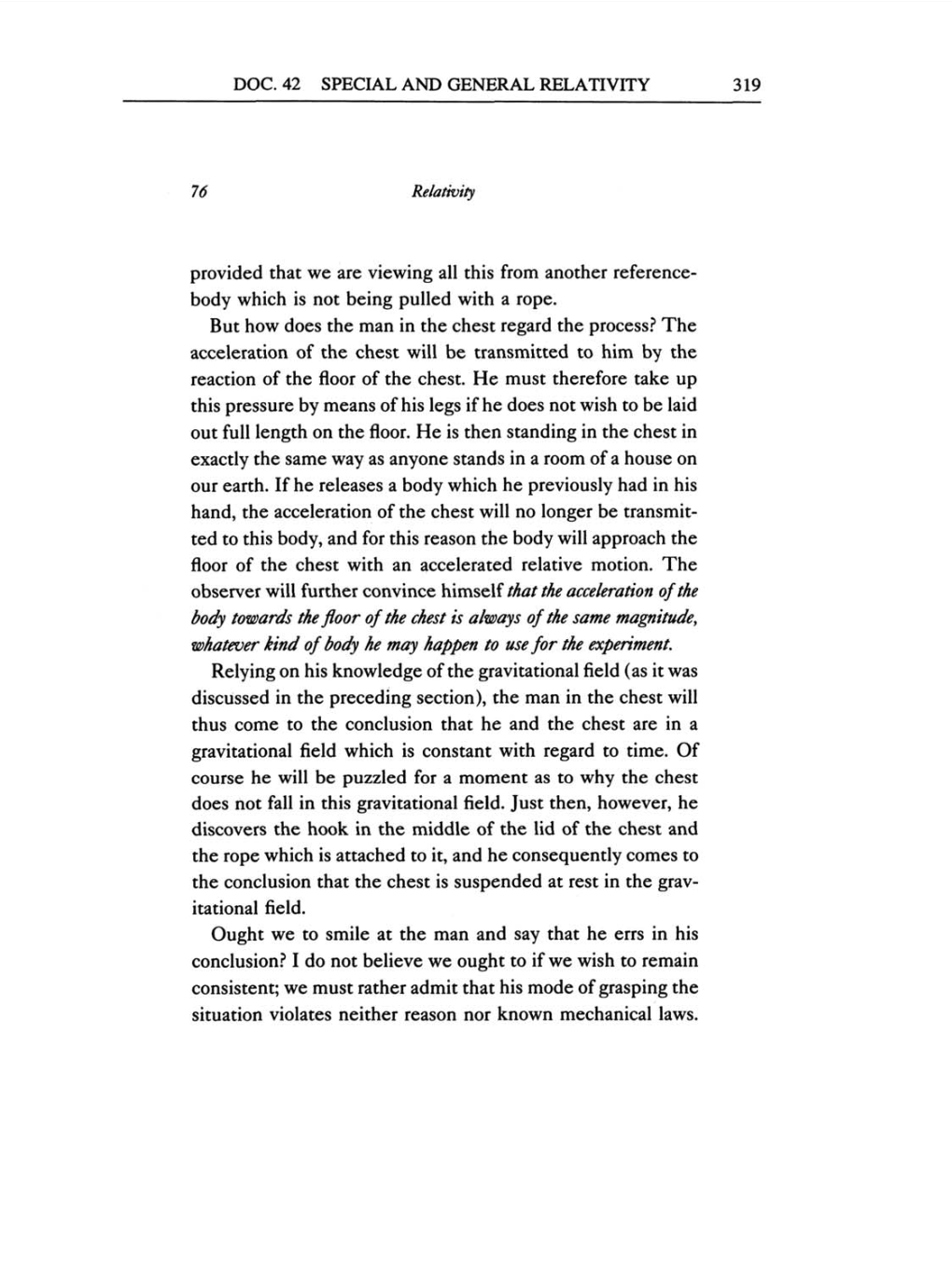DOC. 42 SPECIAL AND GENERAL RELATIVITY 319
76
Relativity
provided
that
we are
viewing
all
this
from
another reference-
body
which
is not being pulled
with
a
rope.
But how does the
man
in
the chest
regard
the
process?
The
acceleration of
the
chest will be transmitted
to
him
by
the
reaction of the
floor
of the chest. He
must
therefore take
up
this
pressure by
means
of
his
legs
if
he
does
not
wish
to
be
laid
out
full
length
on
the
floor.
He
is
then
standing
in
the chest
in
exactly
the
same
way
as
anyone
stands
in
a
room
of
a
house
on
our
earth.
If
he
releases
a
body
which he
previously
had
in his
hand,
the acceleration of the chest
will
no
longer
be transmit-
ted
to
this
body,
and
for
this
reason
the
body
will
approach
the
floor
of the chest with
an
accelerated relative motion.
The
observer
will
further convince himself
that
the
acceleration
of the
body
towards
the
floor
of
the
chest
is
always
of
the
same
magnitude,
whatever
kind
of
body
he
may
happen
to
use
for the
experiment.
Relying
on
his
knowledge
of
the
gravitational
field
(as
it
was
discussed in
the
preceding
section),
the
man
in
the chest
will
thus
come
to
the conclusion
that
he and the chest
are
in
a
gravitational
field
which
is constant
with
regard to
time.
Of
course
he
will
be
puzzled
for
a
moment
as
to
why
the chest
does
not
fall in
this
gravitational
field.
Just then,
however,
he
discovers the hook in the middle of the
lid
of the chest and
the
rope
which
is
attached
to
it,
and he
consequently
comes
to
the conclusion that the chest
is suspended at rest
in the
grav-
itational
field.
Ought
we
to
smile
at
the
man
and
say
that he
errs
in his
conclusion?
I
do
not
believe
we
ought to
if
we
wish
to
remain
consistent;
we
must
rather admit that
his
mode of
grasping
the
situation violates neither
reason nor
known mechanical
laws.
